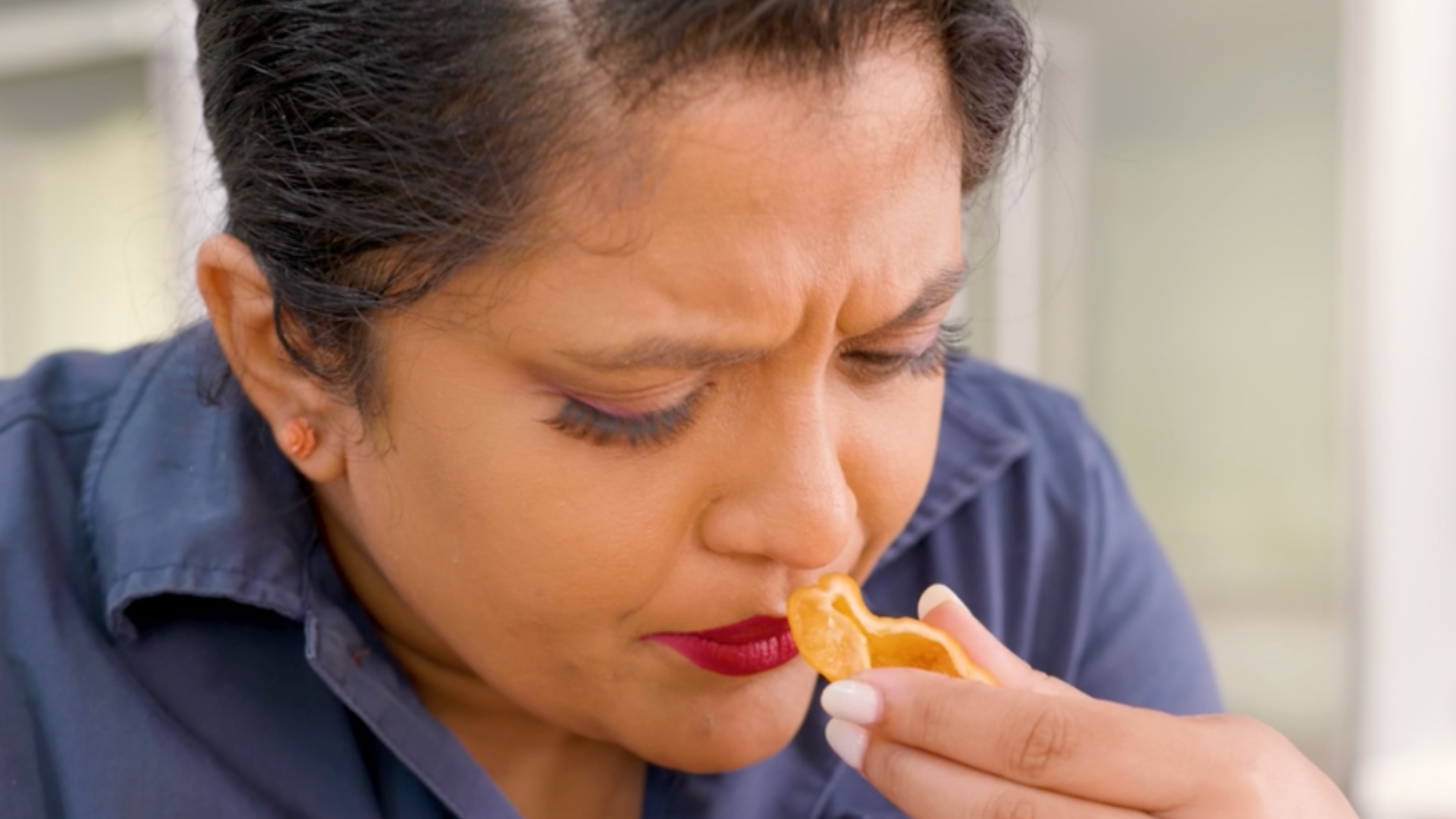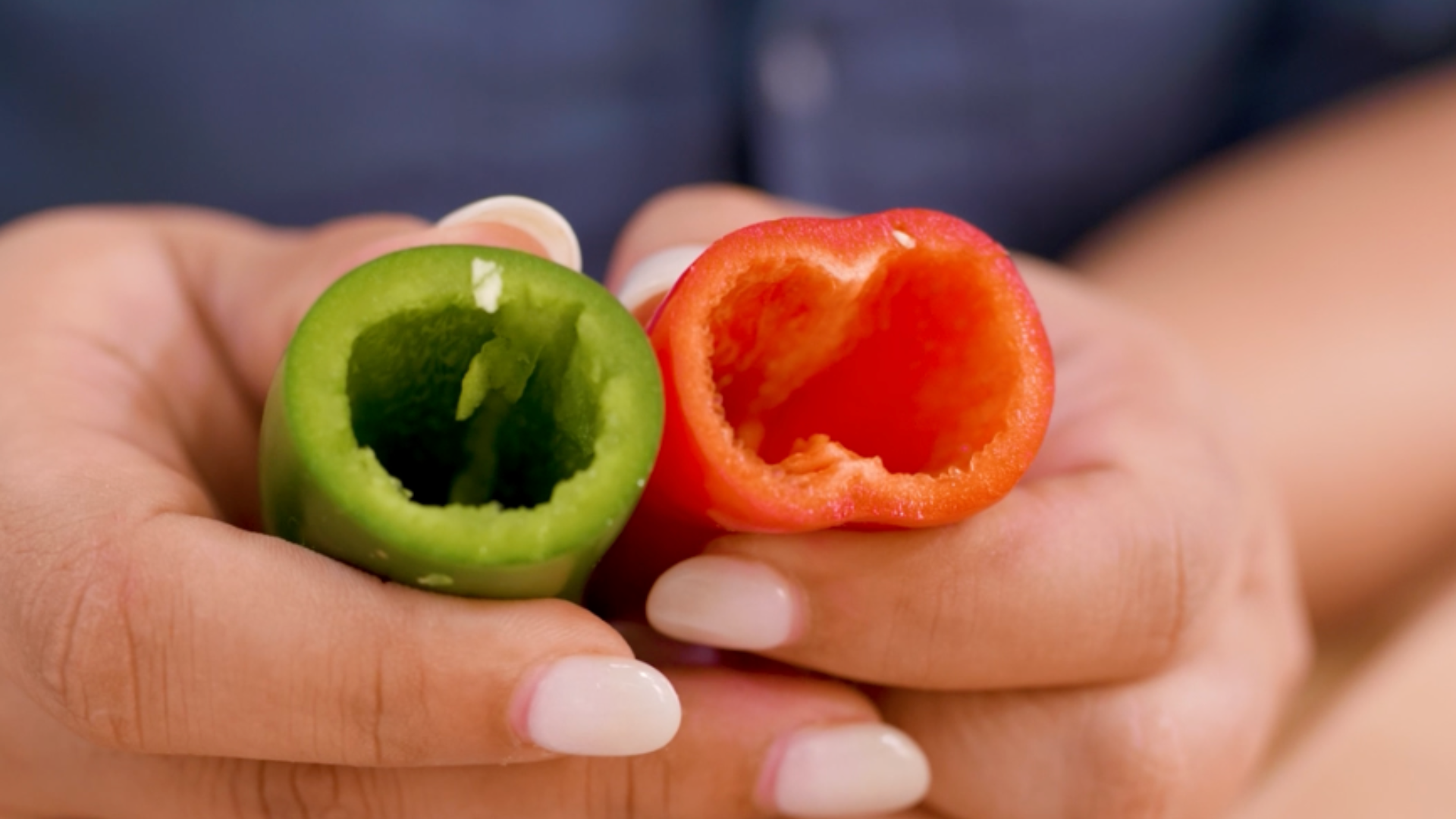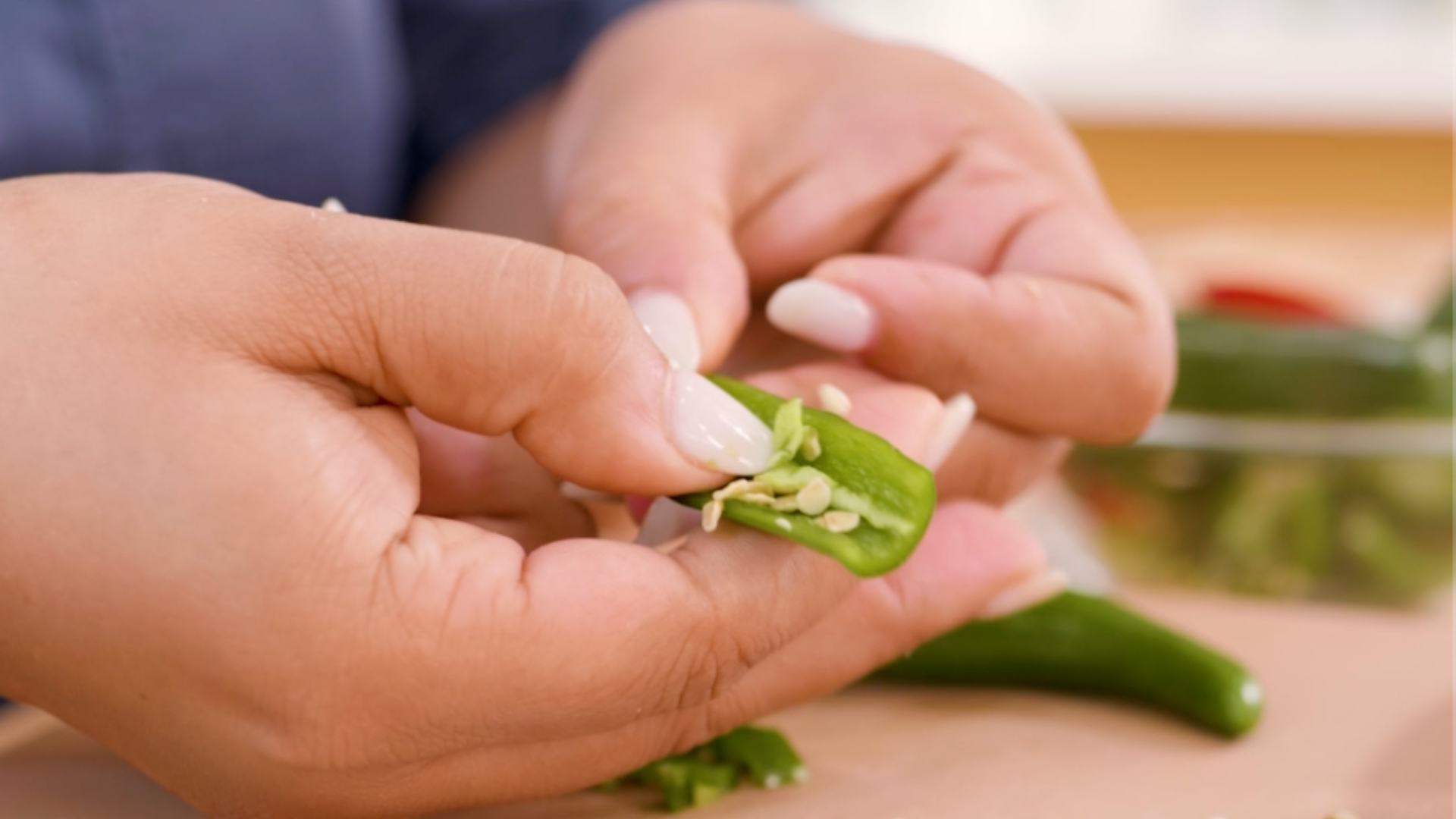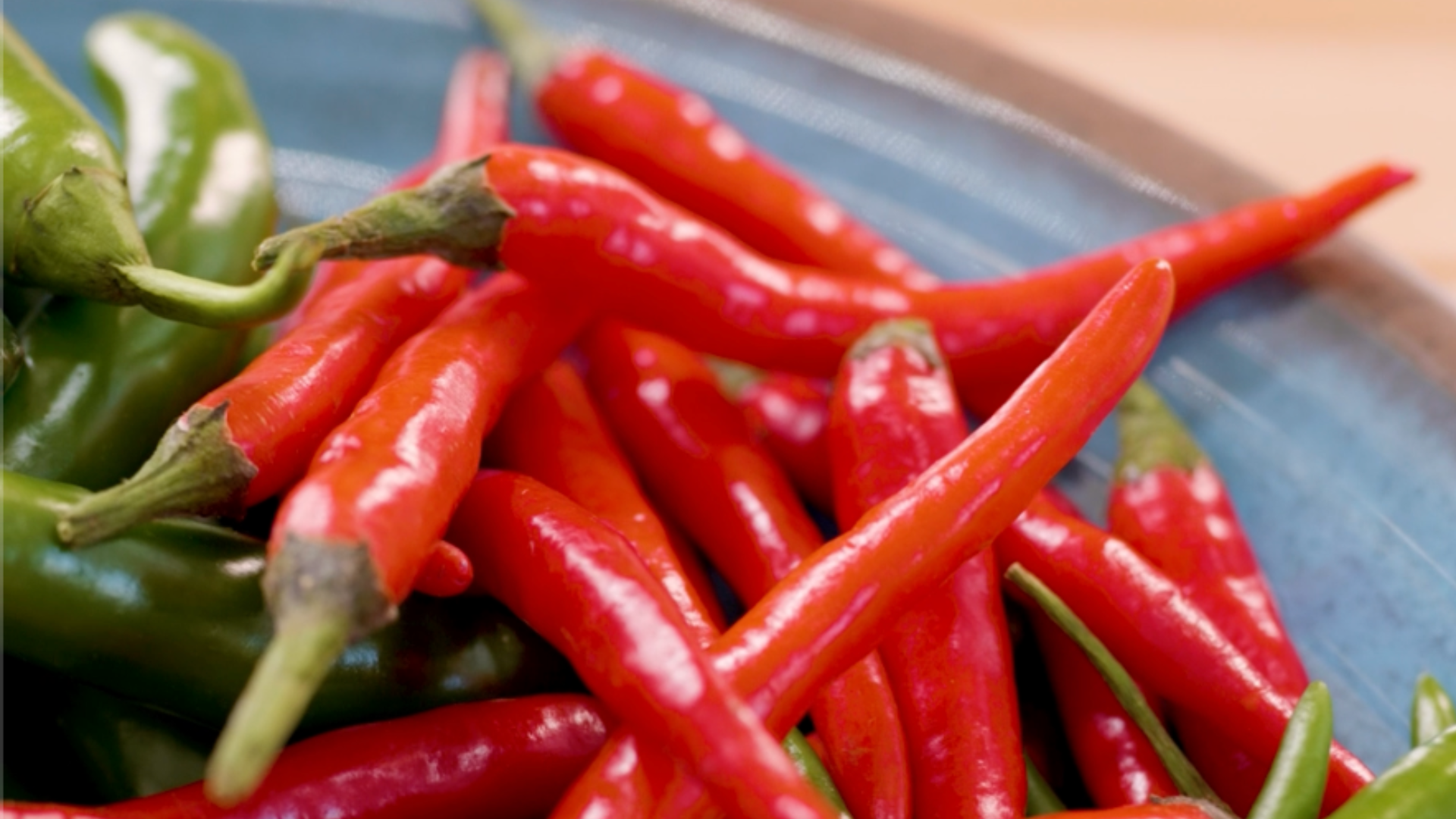Watch Sam give her breakdown of some of the most common chilies here.

How to Detect a Pepper’s Spiciness From Smell?
Generally speaking, the stronger it hits the nose, the spicier the chili. If it smells sweet or similar to a bell pepper, it’s likely you’ve got a mild chili on your hands.
Fresnos, for instance, smell sweeter than a similar-looking jalapeño, which gives off a mild peppery aroma on the outside and grassiness on the outside. The spicier serrano smells a little fruity and grassy, but distinctly more peppery—which is stronger, and more nose-tickling, as the spice level increases.
If you want to put spicy pepper scent to the test, get an extra nose-tingling whiff of the Thai bird chili, among the spiciest of the commonly available fresh chilies in the U.S. An intensely spicy pepper can even irritate the nose by scent (a claim famously laid by residents downwind of Huy Fong Foods’ Sriracha factory.)

How to Tell Peppers Apart From Sight?
Size matters! While this is by no means a hard-and-fast rule, smaller peppers tend to be spicier, while larger peppers tend to be sweeter.
Take the hot serrano, the spicy jalapeño, and the mild poblano—very similar in shape and hue, but ranging from small to large. On the scoville scale, the serrano is three times as hot as the jalapeño, and it’s over 16 times as hot as the larger poblano.
What about all those medium-small green peppers like Fresnos, serranos, and jalapeños, all of which redden when mature? The jalapeño is the heftiest of the three, with thicker walls; Fresnos are usually the widest, while serranos tend to be shorter and skinnier.

Is All the Heat in the Seeds?
Heat isn’t technically a flavor; it’s a pain response triggered by capsaicin, a chemical compound that serves as a defense mechanism for plants. When the plant is “attacked” (i.e. when you take a bite), the compound is released, leading to a burning sensation and irritation.
Contrary to popular belief that the seeds are the hottest part of a pepper, seeds actually do not contain any levels of capsaicin. All of the capsaicin is concentrated to the pith and membrane of the pepper, with seeds often containing residual heat due to close contact.
Can Spiciness Be Measured?
If you’re a fan of hot sauce, you’ve likely heard the word “scoville” thrown around in relation to how hot you should expect the condiment to be. “Scoville” refers to the Scoville scale, a measurement of pungency of chili peppers recorded in Scovile heat units. The scale was invented by American pharmacist Wilbur Scoville in 1912 to measure the capsaicin—or spiciness—of various chili peppers.
Where Do Certain Peppers Fall on the Scale?
To get a better sense of how the Scoville scale measures heat, let’s consider some of the most common peppers. The Carolina Reaper and Ghost Pepper, two chili varieties notorious for their tongue-scorching capabilities, come in at 2.2 million and 1 million heat units respectively on the Scoville scale. Habanero, Scotch Bonnet and Jalapeño, three peppers more readily available at the local supermarket, score lower on the scale at 100,000-350,000 for Habanero and Scotch Bonnet, and 2,500-8,000 for Jalapeño. The lower the unit range, the tamer the perceived spice level in peppers.
What are some other high-ranking peppers? The Trinidad Moruga Scorpion coming in at just over 2 million heat units, the Naga Viper (a product of England) at 1.35 million heat units and the Trinidad Scorpion at 1.4 million heat units.

How Should You Balance Peppers’ Heat?
One of the easiest ways to reduce a pepper’s heat is by removing the seeds and white membrane before cooking. Just make sure to wash your knife and hands before cutting, especially if you need to touch your face or step away from your cutting board for a moment. Trust us, it only takes one instance of nearly blinding yourself to never make that mistake again.
And if you do get it in your eyes, do this: wash your hands, then soak a piece of paper towel or a clean kitchen towel with ice cold milk. Press it over your closed eyes and wait. Why does this work? There is a protein found in dairy milk called casein which naturally combats the burning affects of capsaicin.
Another way of taming a pepper’s heat? Soaking it in a highly acidic agent like citrus juice, vinegar or even alcohol. If you’ve ever made a quick pickle of onions or other pungent vegetables to reduce their potency, this is a similar concept.
Charring will also tone down heat and concentrate sweetness, and (as common in many curries) mild, rich coconut milk dilutes the spice level. If you’ve overdone it on the heat, don’t despair! You can always add a little (emphasis on a little) sugar, which absorbs the oils and tones down the heat.
Now that you’ve learned more about peppers, scroll below to see some of our favorite ways to use them...
Get Ready to Cook
Makes about
1 cup
1 hour
Get Ready to Cook
1
cup
20 minutes
Get Ready to Cook
Makes about 1
cup
15 minutes
plus cooling
Get Ready to Cook
1
cup
45 minutes
15 minutes active







